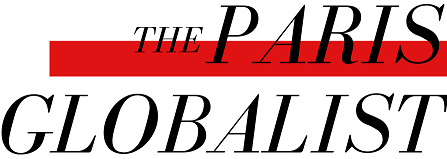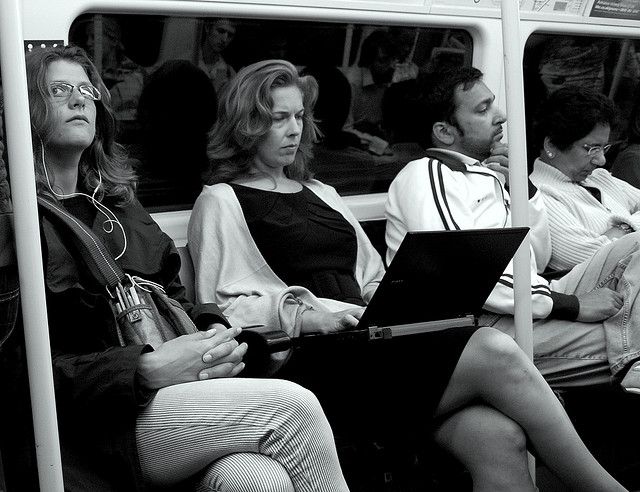By Sabah Kochhar
As I sit down to type this article, I have multiple tabs open on my laptop. My eyes slowly scan the flickering screen, as I take short mental notes of what I notice. I’m poring over an article on a much touted “left of center” leaning media source. The online comments, each one trying to outdo the other via various hot-takes and witticisms, create a colorful web of political commentary – sometimes employing bite-sized humor do to so, other times using sharp rhetoric.
Yet, one glaring omission: Judging by their names, only a small section of these comments appear to be by women.
I move my cursor, click to view another article. On the UK elections. More men commenting here.
I close the tab, veering onto another site. The New York Times. The piece I’m scrolling over, written by a woman, is specifically about the unique experience of womanhood. The comments, however, come from an entirely different viewpoint.
Recently, Emma Pierson, a Rhodes scholar at Oxford University, wrote a piece via the New York Times’ blogs, highlighting the problem of creating safe spaces for women to comment online. Her research yielded the following:
“Women were clearly underrepresented in my data. They made only a quarter of comments, even though their comments got more recommendations from other readers on average….studies of online commenting find broad signs of inequality. (While women are well-represented on some websites, like the image-sharing site Pinterest, these sites do not tend to focus on expressing and defending opinions. Online forums that do often have mostly male commenters: examples include Wikipedia edit pages, the social news site Reddit, and the question-answering sites Quora and Stack Overflow.)”
The gendered segregation of Internet comment sections highlights startling disparities; one glance at sites like Reddit or Quora reveals how deep this problem is. We celebrate and showcase toxic masculinity. Sadly, on the other hand, women’s voices (especially those of women of colour, trans-women and disabled women) continue to be sidelined on the Internet.
When we look at generating discourse, this fact must not be ignored. For young women to open Twitter accounts means exposing themselves to death threats, rape threats and abuse simply for expressing opinions. The #Gamergate story – in which women in the Twittersphere faced threats of assault for merely questioning the toxic masculinity of the gaming world – is only testament to the same.
The Gamergate issue gathered much attention towards the end of 2014, when many famous women from the video game industry, such as game developers Zoe Quinn, Brianna Wu (and feminist Anita Sarkeesian) faced harassment online, as well as a sustained campaign of misogynistic attacks. The Twitter tag #gamergate was used as a vehicle to launch vitriol and abuse onto these women, and several members of Reddit, and 4chan style sites actively participated in threats of rape and death threats, (including the threat of a mass shooting at a university event featuring Anita Sarkeesian.) Game developer Zoe Quinn’s address and phone number were made public shortly afterward, eventually forcing her to leave her house and resort to couch-surfing.
Following women journalists on social media also reveals how women are pushed to the brink. Recently, BuzzFeed India’s Editor in Chief, Rega Jha, tweeted: “it’s so sad that no matter who wins, Pakistanis will continue to be way hotter than us and we’ll continue to be their ugly neighbours”. Her tweet, while no doubt a serious lapse in judgment, was meant to be in jest. Yet, in a nation already frenzied in the wake of a bitter India-Pakistan cricket match, many took to virtual chest-thumping and personal insults as a form of response. Instead of any principled critique of her tweet, many derailed into verbally abusing her, and grossly invading her personal space.
When a young woman decides to express her opinions online, she carries not just the burden of bearing the brunt for her opinions but also the risk of daring to speak up, for taking a stand, as a woman.
As per a recent report by the Pew Research Center, it was found that though there were more men polled claiming to have been name-called on the Internet, women were not only more likely to be disproportionately affected by online harassment, but, “young women, those 18-24, experience certain severe types of harassment at disproportionately high levels: 26% of these young women have been stalked online, and 25% were the target of online sexual harassment. In addition, they do not escape the heightened rates of physical threats and sustained harassment common to their male peers and young people in general.”
From walking on the street, to now navigating Internet violence, women are constantly vulnerable. We need to create safe spaces, to shift the paradigms working against abuser dynamics. From popular virtual movements such as #YesAllWomen to #RapeCultureIsWhen, women (especially minority women) have been trying to reclaim their agency. It’s time we reflect over this.
The Internet offers a cloak of anonymity and the chance to wash oneself off of any ethics, or even decency, and allows people to make threats with impunity. We need to recognize this fact, and work to create safe online zones for those at risk. Social media giants should recognize the vulnerabilities laid bare and exposed via their sites, and aim to develop more hassle-free and efficient harassment and complaint-reporting mechanisms, as well as software.
Of course, it goes without saying that this abuse is also part of a more pervasive, larger problem. It is merely a reflection of real-life sexism, playing out on real/virtual life. While considerable progress has been made, there is still a structural and institutionalized system of bias, even if it is not easily visible to the public’s eye. For all our modern-day talk of third wave feminism’s rise in the developed nations such as the USA, these Internet-harrassment numbers belie some sobering realities. While birth control and paid maternity leave, as well as the wage parity still remain frontline issues, the reports of rape and sexual assault in high-profile colleges – be it the now famous story of Columbia student Emma Sulkowicz’s mattress-carrying awareness campaign, to Duke’s fraternity student’s facing rape allegations – rape culture is omnipresent and speaks to a larger global social underbelly of prejudice.
Even countries such as Norway, which fare better than most in terms of UN rankings and equality indexes, have yet to eradicate institutional inequality. Statistics exist showing that a disappointing 17% of the country’s mayors are women. Also, female representation on local councils is low, at a mere 36%. Clearly, there exists a political representational gap that needs fulfillment.
There are some clear structural inequalities at play, be it in Norway, USA, Yemen or India. No doubt, the problem of sexism plays out disproportionately according to different spheres of politics, economy, culture(s) and such. However, sexism is universal, even if not explicitly manifested for some. Death threats directed at a female gamer based in San Francisco, or a photographer in London are proof that the online world is only holding a mirror to reality. Be it in the so-called ‘progressive’ global North, or in the ‘developing’ global South, women are marginalized. Let’s not allow a new advent of internet anonymity to push women to the back of the queue for equality, yet again.
Featured Image Credit: Emiliano, Flickr CC. License available here
